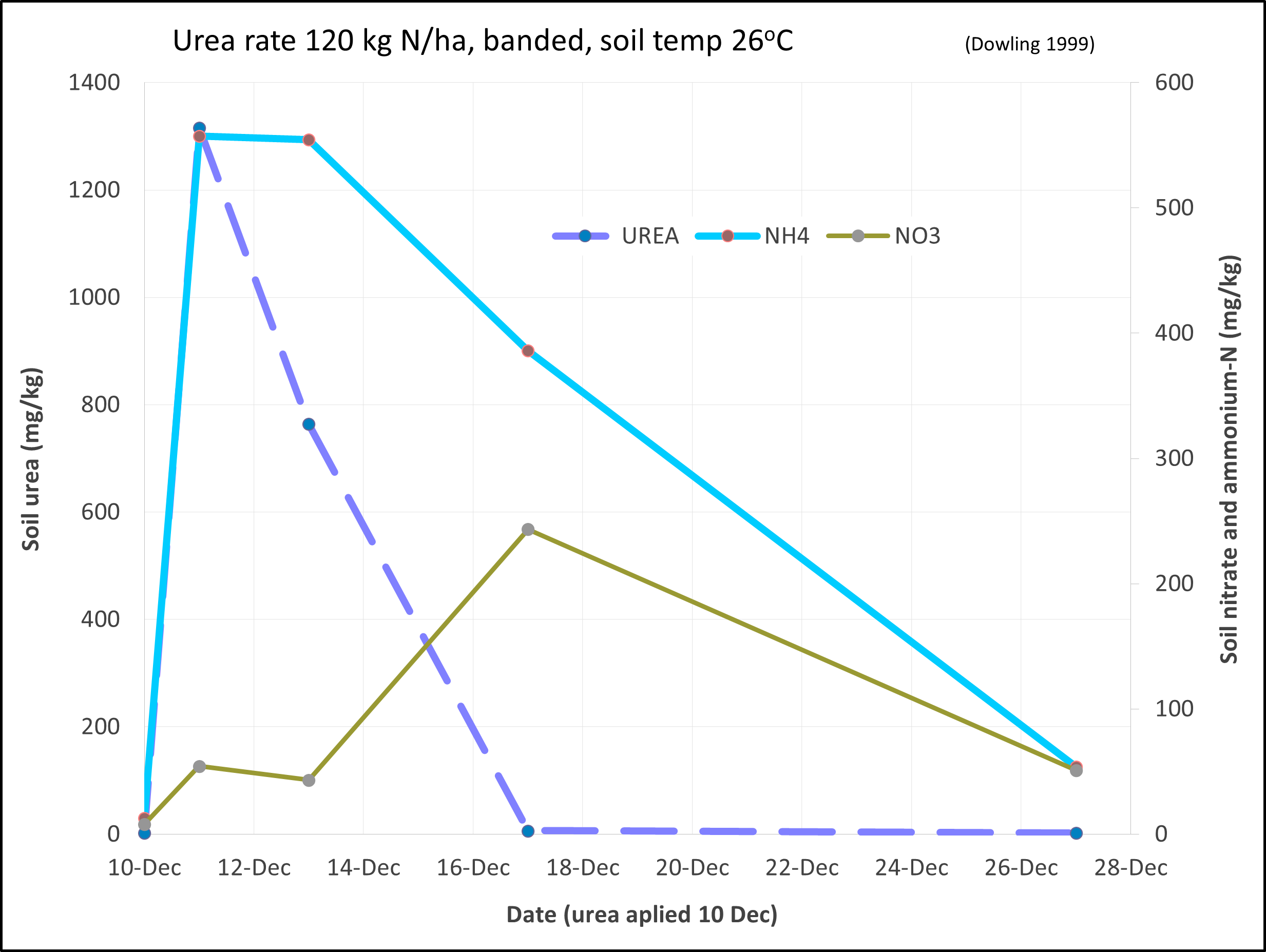The nitrification of urea applied in summer is generally not limited by soil temperature or a lack of soil microbial population. This leaves soil water as the main factor limiting its conversion to nitrate-N.
Therefore, fertiliser N availability is related to two factors. Too dry for the soil biology to be active in the application zone or insufficient water to distribute the nitrate to the “effective” root zone.
With sufficient moisture, a significant increase in urease activity (increase in soil NH4) can be detected within 24 hours of application, and nitrate-N production soon after. The rate nitrate-N nitrate-N increases is influenced by the application method. The high ammonia concentration in soil bands delays nitrification compared to lower concentrations from broadcast applications. That being the case, nitrification from modest applied rates of banded urea is likely to commence and be detectable within 24 – 72 hours and peak within 7 days after application. Peak availability from broadcast application may be a couple of days earlier. Provided the nitrate produced derived is in the root zone, it will appear in petiole nitrate-N measurements quickly. If stranded in dry soil, it may require irrigation or a rainfall event for significant crop uptake to occur.
For irrigated cotton, changes in petiole nitrate due to an N application will likely be detectable within 1 irrigation cycle post-N application.
We aim for a 3 day lab turnaround for petiole N to ensure N application decisions can be made and applied within an irrigation cycle.

